FOX 36 FLOAT RC2 FIT Fork
(discontinued)
| Where To Buy | |||
|---|---|---|---|
Free shipping on orders over $50 (continental U.S. only).
International shipping available. Some exclusions apply. |
|||
Free shipping on orders over $50 (continental U.S. only).
International shipping available. Some exclusions apply. |
|||
Review by Brandon Turman // Photos by Colin Meagher
For years the FOX 36 has been a heavy hitter among a sea of lightweight fork options. It’s the fork many of the biggest, hardest charging riders turned to when nothing else seemed to suffice. Somewhere along the line the competition stepped up their game, though, and we’ve seen a shift in the market place and a demand for better performance at a lighter weight. FOX is here to answer that call with the completely redesigned 2015 FOX 36 FLOAT RC2 FIT fork.
We’ve had one on test for a little while now, charging down every rough patch of trail we can find. Read on to see why this fork is set to stir things up once again…

FOX 36 FLOAT RC2 FIT Highlights
- Made for Trail/All-Mountain/Enduro/Freeride use
- 36mm Kashima coated stanchions
- New FLOAT air spring system
- Tunable air spring via volume spacers
- Refined RC2 damper with sealed FIT cartridge
- External adjustments: Rebound (19-clicks) // Low-speed compression (22-clicks) // High-speed compression (26-clicks) // Air spring
- 150, 160, 170, and 180mm stock travel options
- Internally adjustable travel in 10mm increments (sold separately)
- 26, 27.5, and 29-inch models
- Aluminum tapered (26, 27.5, 29) and straight 1 1/8-inch (26 only) steerer options
- Convertible 15/20mm thru-axle
- 180mm post mount disc brake tabs
- Weights ranging from 4.19 to 4.30-pounds (1.9 to 1.95kg)
- MSRP $1,035 to $1,050
- Available July, 2014
Weight Savings
One of the biggest improvements to the 36 is a substantial weight reduction, bringing the fork in line with the competition. All told they’ve shaved close to a half-pound off its predecessor, with weights now starting at a claimed 4.19-pounds (1.9kg). That’s up to 0.2-pounds lighter than the 2014 FOX 34, and just 0.15-pounds heavier than the highly regarded RockShox Pike - this fork’s biggest competitor. Most of the weight savings are thanks to an optimized chassis design that takes full advantage of recent casting technology improvements. FOX says they’ve been able to do this without compromising strength or stiffness.

Here are the areas they were able to shave a few grams:
- 1.5-inch tapered steerer = 34g lighter - New optimized butting profile to minimize weight and maximize stiffness
- 1.5 crowns = 45g lighter - Stylized to match the new 36 lower legs
- Lower leg = 98g lighter - Arch and dropout designs evolved from the 2014 40 // Lower leg tube section has a new optimized 5-taper design // 180mm direct disc brake post mount means there’s no need for adapter hardware (saves additional 20g)
- Upper tube set = 114g lighter - Tubes are now butted rather than straight and the length is shorter
- 20mm thru-axle and hardware = 65g lighter - Bolt-on design saves weight over 20QR system
- New FLOAT air spring system = 94g lighter - Uses air negative spring and other refinements
Friction Reduction
While the FOX 36 may be loved for its brute strength and ability to take big hits, it has never really had that buttery smooth feel off the top, at least in the air sprung models. Aware of this shortcoming, they made several updates in an effort to reduce friction in the system.
An improved Kashima coat on the upper tubes reduced friction by about 15% in combination with FOX's new 20-weight Gold Bath Oil. The new coating strikes a better balance between smoothness and holding lubrication, allowing the oil to fill the porous parts will its slippery Molybdenum goodness. The RC2 damper also sees an updated seal head design that lowers the breakaway force, something we can confirm after cycling the damper outside of the fork. FOX also increased the bushing overlap (distance between the bushings) to help reduce friction caused by splay impacts (think 50/50 cases).
As we’d find out on the trail, all of these tweaks truly did add up to a big reduction of friction, so much so that FOX had to re-tune the RC2 damper as a result.

Improved Air Spring System
The FLOAT air spring (short for FOX Load Optimized Air Technology) sees a major update for 2015, starting with the 36 and later making its way into FOX’s other platforms. The new air spring design no longer relies on a coil negative spring, and instead uses an air bypass to automatically adjust the positive and negative air chambers during inflation. While FOX has not used an air negative spring in a fork to date, the system is similar to what they have used in their rear shocks for years. Using an air negative spring saves weight and ensures that the fork is properly adjusted to every possible rider weight. Previously the stock coil negative spring was tuned for an average weight rider, meaning that heavy and light riders didn’t see optimal performance. FOX says this change also ensures consistent axle-to-crown length regardless of rider weight, which previously wasn’t the case.
One downside of the new system is that it requires the addition of one dynamic seal, but FOX says it’s an easy trade-off when you consider the lower weight, balance with the positive air spring for every rider, and quieter feel at the bars.

Riders can further fine-tune the character of the air spring by installing or removing air volume spacers, impacting the progressivity and support offered by the fork. The addition of volume spacers starts to make a noticeable difference at about 50% of the travel and then increases through the rest of the travel. Spacers are available in 7.6cc (blue) and 10.8cc (orange) sizes. The fork comes with one blue spacer installed and three in the box.
Also new for 2015, with the exception of the 26-inch fork, 36 TALAS forks will receive the most recent TALAS system (TALAS 5) first introduced with the 2014 34 line.

Improved RC2 Damper
As a result of the friction improvements to the fork and damper seal head, the RC2 damper sees changes to the shim stack and low-speed needle to add more compression. Just like before, external low and high-speed compression adjustments are on top of the fork. The external rebound adjustment is at the bottom.
Lower viscosity damper oil in the bladder-style sealed FIT cartridge is said to improve damping consistency and control, even during big temperature changes. FOX also implemented a dyno near the end of their production line as a new quality control measure to identify friction and compression issues before the forks leave the factory floor, improving consistency from fork to fork.
Unfortunately the new damper and air spring are not “technically” retrofittable to prior model year 36 forks.

Internally Adjustable Travel
Travel changes are possible in 10mm increments with the stock air spring assembly and a neg plate spacer. Forks with 160mm of travel can be spaced down to 110mm and forks with 180mm of travel can be spaced down to 130mm. Note that the air spring is optimized for the stock 180 or 160mm length, and big travel adjustments may have an impact on performance. Also know that the 170mm 27.5-inch fork can be upped to 180mm by removing the neg spacer.

Convertible 15/20mm Thru-Axle
Following the recent push to 15mm thru-axles, FOX was wise to make the new 36 compatible with both 15 and 20mm wheels. By installing a set of the included asymmetric shims, you can convert the fork from 20 to 15mm or vice versa. While there are many factors that can impact the number, FOX says the 20mm axle setup is about 8% torsionally stiffer than the 15mm. The pinch bolt clamp design was used because it’s 65g lighter than the previous 20QR system.
All Wheel Sizes
In addition to the long-standing 26-inch variety, the 36 will now be offered in 27.5 and 29-inch models. Here’s the breakdown of what’s offered:

FOX reduced the steerer tube press-in height to minimize axle-to-crown length. For comparison, 26-inch 2015 36 forks have a 9mm shorter axle-to-crown length compared to 26-inch 2011 to 2014 36 forks. The axle-to-crown length is 5mm less than a 2014 34 on 27.5 and 29-inch models. Combined with the fact that FLOAT forks previously used a coil negative spring that would extend at high positive air spring pressures, heavier riders may find that they can run 10mm more travel on a 27.5 or 29-inch bike without affecting the way their bike rides.

36 axle-to-crown lengths:
- 26-inch – 160mm travel = 536.4mm, 180mm = 556.4mm
- 27.5-inch – 160mm = 549.1mm, 170mm = 559.1mm
- 29-inch – 150mm = 557.1mm, 160mm = 567.1mm
36 fork rake dimensions:
- 26-inch – 37mm
- 27.5-inch – 44mm
- 29-inch – 51mm
Finally, FOX will continue to offer the 36 with a straight 1-1/8 steerer option for 26-inch riders. 27.5 and 29-inch forks will be tapered only.
FOX says that this fork is “leading the model year and more stuff will follow,” which is reason for more excitement.
Setup
Our test of a 2015 FOX 36 FLOAT RC2 160 27.5 was performed using the new 2015 Diamondback Mission 27.5, a 160mm travel all-mountain bike with a 66.5-degree head angle. It replaced a Factory Series 2014 FOX 34 FLOAT CTD 160, which would make for a great back-to-back comparison.

Installation of the fork was just as you’d expect with no obvious issues. The fork was set up using the stock front wheel and 15mm axle adapters, which required very little time to install and fit securely in the dropouts.
At 175-pounds geared up, we initially set the air pressure to FOX’s recommended 68psi (~20% sag in standing attack position). After a short spin around the trailhead we decided to up the pressure to 75psi (~17% sag), feeling as though we wanted more support from the air spring through the entire range of travel. Note that while pressurizing the air spring, you need to cycle the fork slightly a few times to equalize the system due to the new air negative spring. We left the fork with one blue 7.6cc volume spacer installed to begin our test.
Thinking back to our previous experience with the FOX 36, we thought the FOX techs were crazy when they started us off at 12 clicks from closed on the compression settings, but we were willing to give it a go. Rebound was set to a reasonable rate and off we went.
On The Trail
So far we’ve tested the fork in two locations - rocky Moab, Utah during the product launch and flowy Oakridge, Oregon on our own terms. Moab trails included several laps on Lower Porcupine Singletrack (LPS), as well as one full run down Porcupine Rim and a HyMasa to Captain Ahab loop, providing a full dose of gnarly, big hit terrain. Oakridge trails have included Alpine, Moon Point, Larison Creek, Larison Rock, Salmon Creek, and North Fork, giving us some perspective on how the fork copes with higher speeds, roots, and occasionally muddy conditions.

Switching from the 34 to the 36, the smooth, stiction free feel of the new fork was immediately apparent. The difference felt like night and day, requiring relatively little pressure on the bars before the fork would begin to cycle. The 34 we removed had an almost notchy feeling during low-speed compressions, which was made more obvious after the switch. Even after a month of use the 36 remains smooth from the first push, lacking the sometimes sticky/squeaky feel of many FOX forks during the first few compressions after a day or two of not being used.
Small bumps all but disappear under your weight, and we noticed a marked improvement in front wheel traction around bumpy off-camber corners compared to the 34. High-speed chatter feels like anything but chatter, and the fork actually made the shortcomings of the rear suspension on our test bike more apparent. After a long descent down Porcupine Rim at a quick pace with very few breaks, our hands and forearms were still in good shape. If you’ve ridden the notoriously rough trail, you’ll know how well that speaks of the fork’s ability to smooth things out.

FOX Pro athlete, Enduro super star, and Cinco de Mayo champion, Lars Sternberg, finds flow where there's little to be found.
Medium and big hits are absorbed in a smooth, controlled fashion, regardless of the compression damper settings, and you never feel as though the fork is blowing through its travel. If we had, we would have simply added an additional volume spacer, which can be done in a matter of minutes. The feel is consistent trough the entire stroke. We regularly use ~90% of the travel on rougher trails with just one air spacer installed, only reaching the bottom on the biggest hits. Bottoming out isn’t overly harsh and the fork doesn’t make any alarming noises.

Flat tires are part of the game in Moab. It's seriously rough terrain.
After spending time on the previous 36 and recent 34 CTD forks, we’ve been impressed and surprised to find that the range of compression adjustments is truly usable. Before we would often run them wide open in an effort to get a supple feel, using high air pressure to compensate. The feedback provided to the rider is never sharp feeling, but can be firm against your hands if that’s what you desire. In the mid-range of the compression settings it’s comfortable to push against the fork in turns, off lips, and through g-outs to control the bike. Even when wide open it has enough damping support for flatter, bumpy trails at a decently quick pace. When we cycled the damper outside of the fork, we were blown away by the range of force required to compress it from full open to full closed, and it was never sticky feeling once in motion. There’s lots to work with here on both ends of the spectrum...

Ariel Lindsley was a big part of the FOX 36 development process and can shred with the best of them.
The chassis adds a lot to the ride as well, with some of the characteristic 36 stiffness qualities showing through when things get really wild. It doesn’t feel like a big stiff bruiser of a fork anymore, though, and the weight is less noticeable than before. This is due in part to the improved smooth feel of the damper and friction improvements. Deflection off rocks hasn’t been an issue, nor has binding under any type of load or landing - one of the biggest advantages of the 36 over the 34 and even some major competitors in our eyes.
The fork transformed our test bike into one that could be ridden without abandon into the unknown, trusting that we’d be able to handle whatever the trail threw at us. Hard braking with the new 36 is pretty incredible, because it seems to remain fully active but just a few inches into the travel, providing loads of smooth, progressive control while slowing you down comfortably and allowing you to look further ahead. We went from occasionally riding over the back as a safety measure to standing up over the bars and charging, knowing the front end would handle well regardless of what was around the next turn.

Our final “everyday ride” settings include a slight pressure drop from our starting point, which was initially high as a result of coming off the 34 that made us feel as though more pressure was needed in place of proper damping control:
- 67psi (for 175-pound rider weight)
- Low-speed compression 9 clicks out from closed
- High-speed compression 10 clicks out from closed
- Rebound 12 clicks out from closed
- One volume spacer
If the terrain calls for it, we’ll crank in the low and/or high-speed compression a few clicks for added support.
Things That Could Be Improved
The travel adjust procedure requires a good deal of time and a tool or two that many home mechanics aren’t likely to have on hand. Those wanting to change the travel will want to reference this service video before getting started.
Some will complain about the pinch bolts on the axle in place of a QR system, requiring you to tighten four bolts and the axle with a 5mm allen key which can be time consuming when you’re eager to start a ride or hurrying to change a flat between race stages. Some will hate this, others will love it for the added security. As a side note, our 15mm axle conversion hasn’t been creaky so far, nor do we expect it to ever be given the design.
Given that the fork will be used primarily by gravity-seeking-speed-junkies, some of which will be chair lift assisted during a race, we can see the benefit in including pressure bleeders like on the 40. FOX says, “We have no plans to update the 36 lowers to include air bleed buttons similar to the 40 fork. Like any fork, a big change in elevation will affect the internal pressures of the fork and slipping a zip tie between the seal and upper tube can help relieve the pressure in the lower leg.” This process is easier said than done on this model, and may require a few attempts with various zip ties.

Long Term Durability
Looking the fork over, only one thing jumps out as a potential concern. There is a notch on the rod that enters the negative chamber that allows the two air chambers to equalize when the fork is fully extended. This notch will cycle past an o-ring seal every time the fork tops out and is then compressed (likely dozens of times per ride). Over thousands of cycles it’s possible that the notch would wear the o-ring out, rendering the seal ineffective and likely shrinking the fork down a few inches into the travel as a result. FOX says they rounded the edges of the notch for this reason, and haven’t seen an issue during in-house cycle tests or out in the field.
Beyond that, we’ve seen no indications that the fork isn’t in it for the long haul, though one month of use is nothing like what the typical rider will put it through. The right leg is seeping a very small amount of oil, though we suspect it’s still too new to consider a fault. We’ll update this review if any issues arise. FOX recommends a lower oil change every 30 hours of use, and an air chamber/damper oil change every 100 hours.

What’s The Bottom Line?
Our time on the FOX 36 FLOAT RC2 FIT fork has been nothing but positive. It’s a package that’s very competitive in the weight and price games, compatible with just about any bike or wheel, and finely tunable across a wide usable range of independent adjustments. It transformed our ride for the better, allowing us to charge harder with more confidence and control.
After putting out a few somewhat rough product offerings in the trail/all-mountain segment, it seems as though FOX is back on the rise, and we’re pumped to see them throw a real contender back into the ring. We think the new 36 is one worth betting on - it's capable of matching or besting current class leaders in many ways. When the Enduro race season really takes off you can count on seeing it under some of the World's best racers.
Forks will be available starting July 2014. Visit www.ridefox.com for more details.
Bonus Gallery: 21 Photos Showing What’s Inside the New Fox 36 RC2 Fork
About The Reviewer
Brandon Turman likes to pop off the little bonus lines on the sides of the trail, get aggressive when he's in tune with a bike, and to really mash on the pedals and open it up when pointed downhill. His perfect trail has a good mix of flow, tech, and balls-to-the-wall speed. He loves little transfers, rollers, and the occasional gap that gives him that momentary stomach in your throat kind of feeling. Toss in some rocky bits with the option to double over them or risk pinch flatting and you've got a winner in his book. In 13 years of riding he worked his way through the Collegiate downhill ranks to the Pro level. After finishing up his mechanical engineering degree, his riding focus turned to dirt sculpting and jumping with the occasional slopestyle contest thrown in for fun. Nowadays he's Vital MTB's resident product guy, putting in saddle time on nearly every new platform and innovation the bike industry has to offer.
1 member reviews
Excellent adjustability
Consistently plush (even in first 1" of travel)
15mm to 20mm adaptability
No 170mm Talus version
Before you read, this is a review for the 2015 Fox 36 Talus.
Replaced my Pike for the Fox 36 Talus and have never been happier. The 36 Talus was thrown onto my Santa Cruz Nomad. I ride my trail bike like it's a mini DH bike and I can't say how pleased I am with how the Fox 36 handles.
The main reason why I went to the Fox 36 was for it's increased stiffness, small bump compliance, and overall adjustability. So lets talk about it.
The good:
It's stiff! When it comes to overall feel, specially when landing deep and flat on 30+ jumps, there isn't much (in my opinion) stiffer than the 36 in terms of single crowns. Given that this is the lightest weight 36 ever produced, I haven't noticed any decrease in stiffness compared to previous year models. What that means is that you have the same stiffness with an even lighter weight fork.
The adjustability far exceeds my needs and expectations. One of the main reason I left the Pike for the Fox 36 was because I wanted a little more knob adjustability. Sure the Pike has bottom-out tokens but I don't necessarily bring a ratchet and socket to pop my air cap off to adjust how the fork feels while on the trail. Having this adjustability at just a twist of a knob was a huge plus.
One thing I noticed between the Pike and Fox 36 was how plush and smooth the Fox 36 was through it's first inch of travel (also know as small bump sensitivity). The Pike is a lighter fork but I feel Rock Shox sacrificed a bit of small bump sensitivity in order to get it there. The Fox is slightly heavier but when it comes to overall feel on the trail, especially more technical trails, the less than a half a pound of weight increase is well worth the smoother ride.
Durability was a huge plus as well. Rock Shox (Sram) is king of warranty customer service. I feel this is maybe due to the fact that they need to warranty a few more products than Fox does. Is it the quality control? Is it due to the fact that there are more plastic pieces in their internals? I can't say for sure but if you want a flawless fork for going out into the middle of nowhere, Fox is the best way to go.
One other thing I really like about the Fox 36 Talus is the adjustable travel feature it has. If you talk to some people about adjustable travel they may say that it's something of the past and its just something that isn't needed anymore. They absolutely have a right to their opinions but when climbing, especially steeper sections of a trail, by dropping into the reduced travel I'm able to climb, no necessarily better, but certainly more easily than having a full 160mm up front. I notice my front wheel staying more on the ground and I am able to maneuver around obstacles better. For the $100 of whatever the price difference is between the Float and Talus, I would recommend the Talus to anyone who climbs more than 30% of the time.
Lastly, I love the fact that it comes with 20mm to 15mm adaptors. Some may say thats something that 20mm is something that is just outdated but being able to swap out your DH front wheel with your trail bike is pretty darn handy sometimes. Excellent job Fox.
The bad:
Riding aggressively, my only complaint is that the Fox 36 Talus doesn't come in a 170mm or 180mm version. For the Santa Cruz Nomad and my riding style, I feel a Fox 36 Talus in a 170mm travel would be perfect.
If this fork also came with a tool-free system for the front wheel that would save us all the embarrassment of forgetting your multi-tool at home when blowing through a tire.
Aside from these two critiques, the Fox 36 Talus is absolutely flawless. I would recommend this fork to anyone looking for complete control on all-mountain / enduro terrain.
0 comments
Post a reply to: The best Fox 36 to date
Specifications
Weights Ranging From 4.19 to 4.30 lbs. (1.9 to 1.95 kg)
Convertible 15/20mm Thru-Axle
Internally Adjustable Travel in 10mm Increments
| Where To Buy | |||
|---|---|---|---|
Free shipping on orders over $50 (continental U.S. only).
International shipping available. Some exclusions apply. |
|||
Free shipping on orders over $50 (continental U.S. only).
International shipping available. Some exclusions apply. |
|||














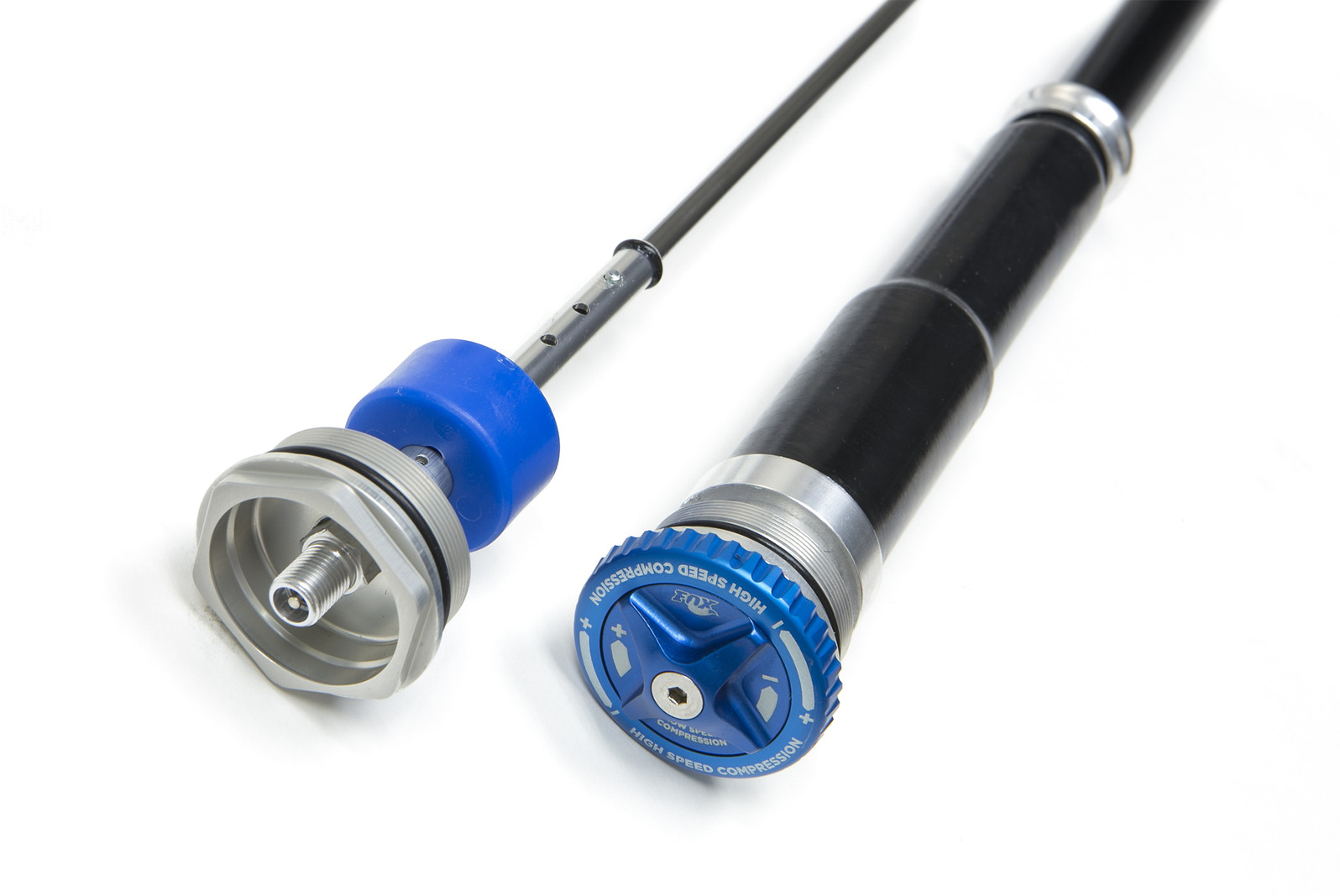






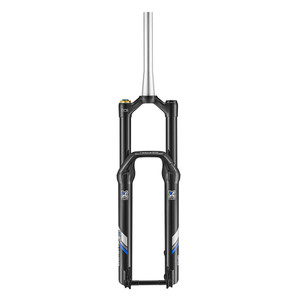
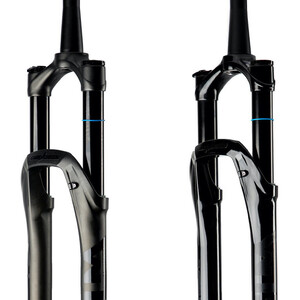

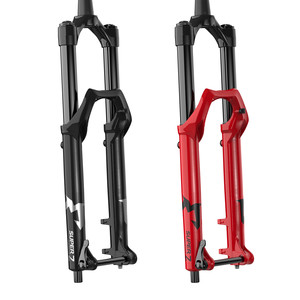
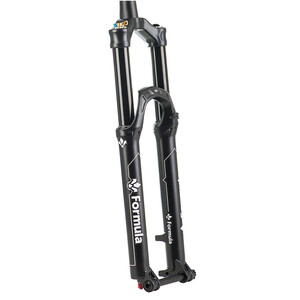

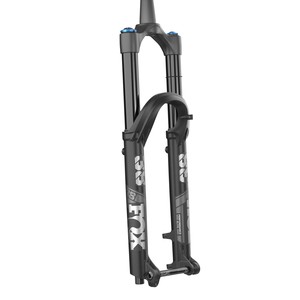






13 comments
Post a reply to: Tested: 2015 FOX 36 FLOAT RC2 FIT Fork